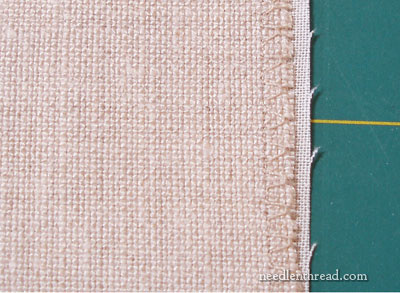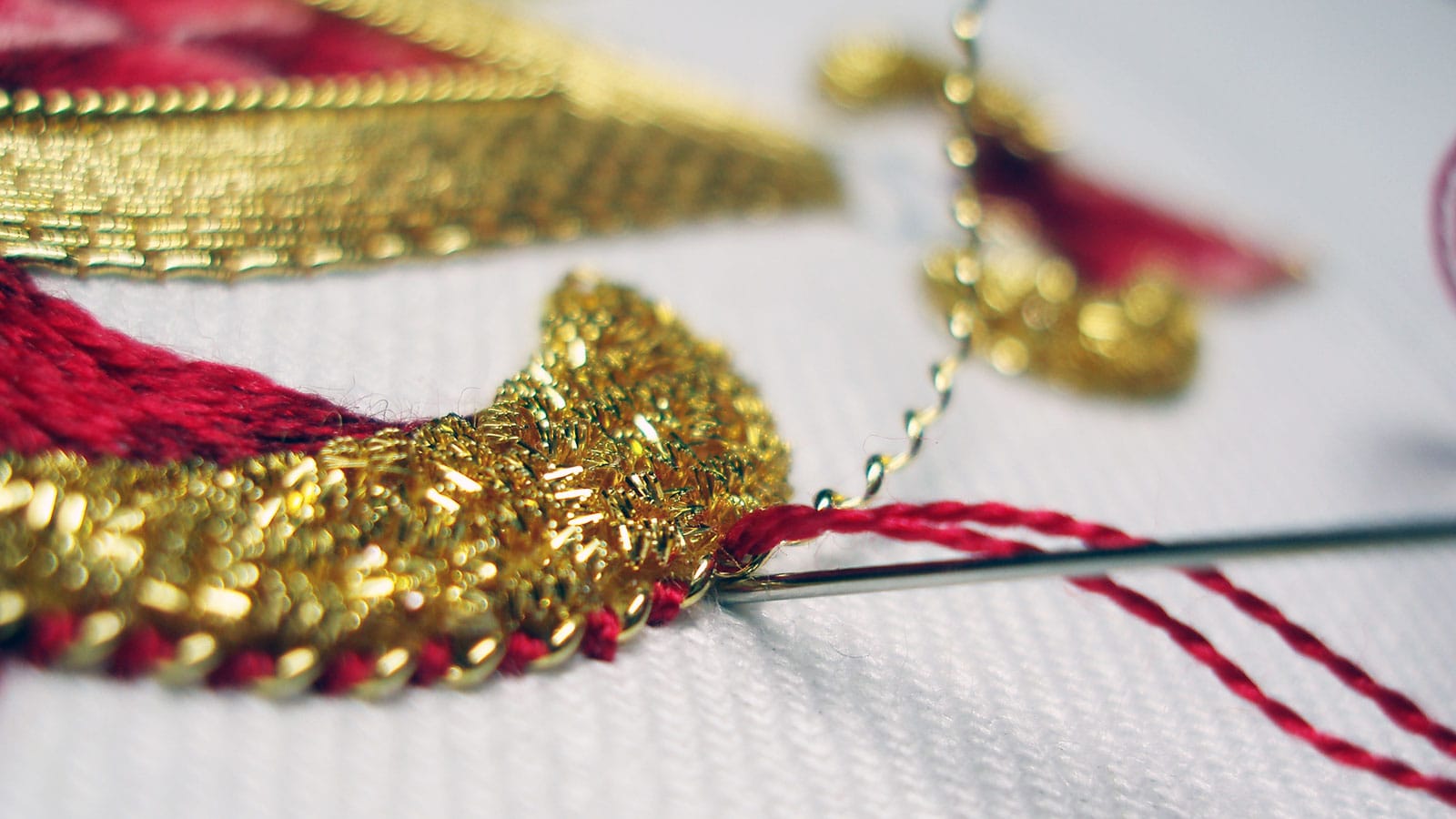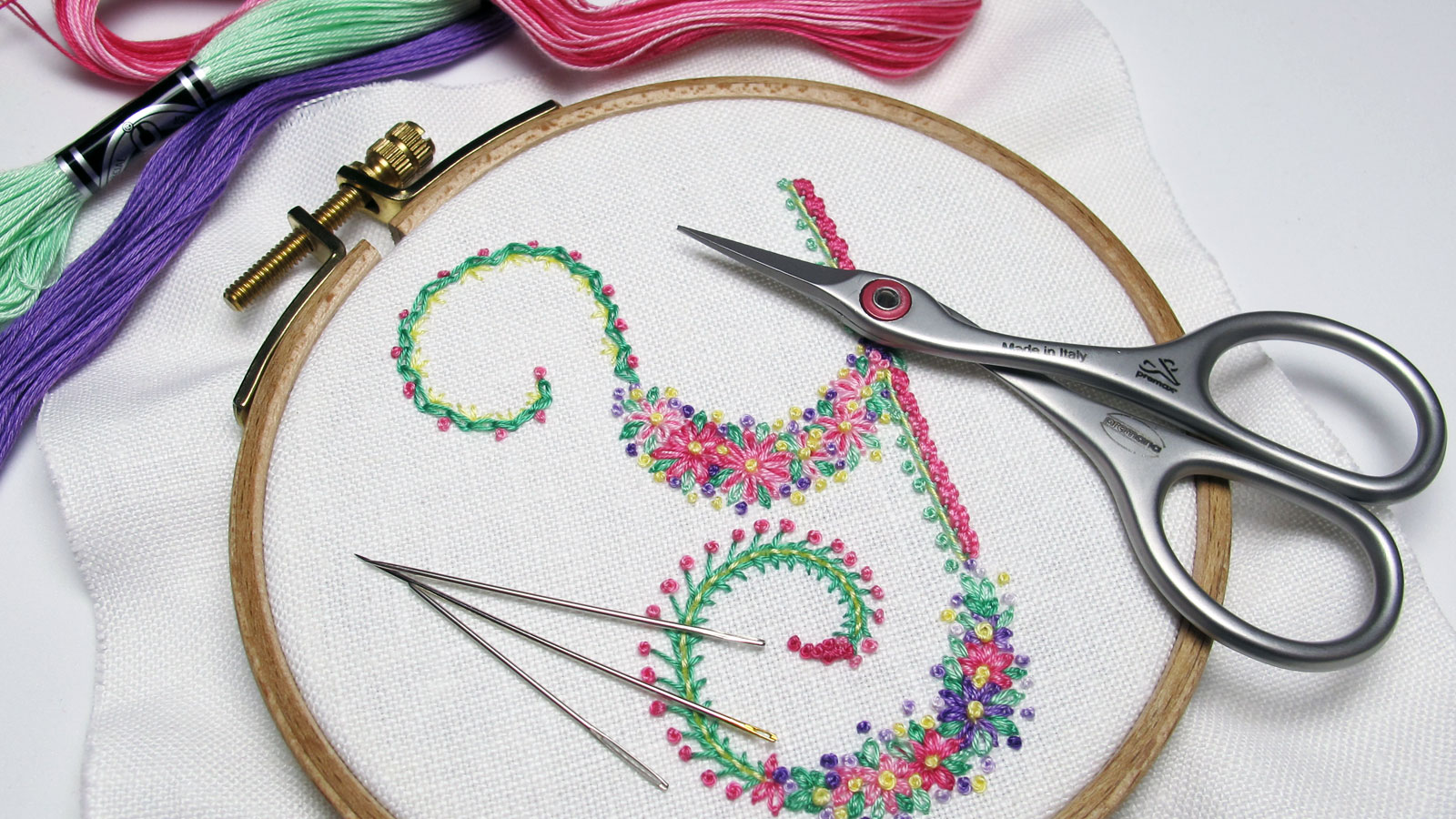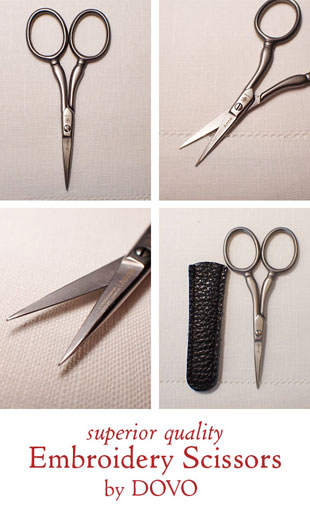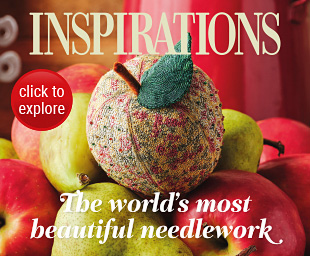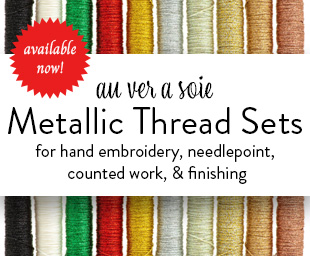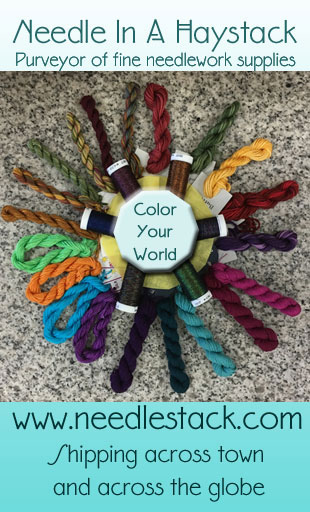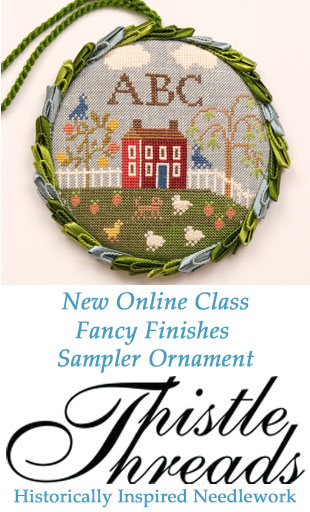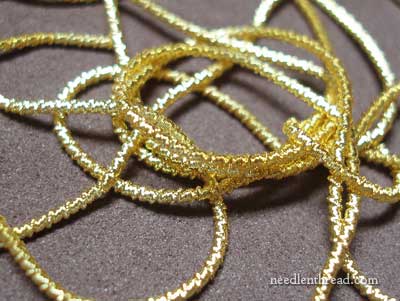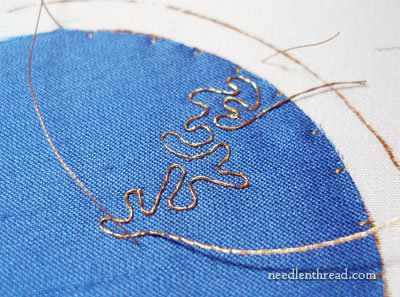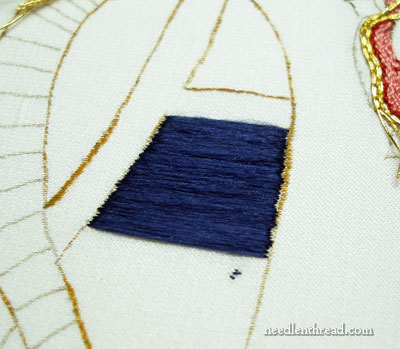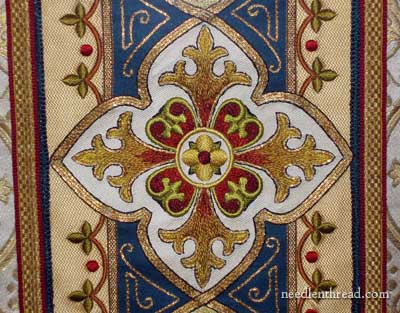Laurie Latour, author of The Guide to Gingham Embroidery: Book One – Stitch & Learn Gingham Lace, Snowflaking, & Gingham Cross Stitch, is guest posting here today. Laurie’s an avid collector of gingham embroidered aprons and an expert on the subject of All Things Gingham-Embroidered. I hope you enjoy her article!
Ah, the long lazy days of summer, a time to dream and play and have fun. Or so it was when we were kids. Now, maybe not so much. I don’t know about you, but there’s still a playful little kid inside me yearning to be set free. Free to explore, imagine, and well, just have fun.
These are the very prerequisites for creativity: giving that inner child permission to play, time to dream without the clamor of endless To-Do lists, and freedom to explore without the fear of making a mistake. That applies to our needlework as well as any other creative endeavor.
As we play and try out something new with needle and thread, why not invite a child to join you? Or perhaps an adult who never learned to sew, much less to embroider. Approach needlework as a fun time together, rather than an intimidating endeavor.
My hobby, collecting gingham embroidered aprons, became a call to creativity and has sparked many ideas to try new designs and threads in my needlework. My display of vintage aprons has changed me from someone content to always follow a pattern, to a more adventurous soul who now delights in playing with needle, thread, and fabric. After all, what do I have to lose? A bit of gingham and some floss is not a huge investment, but it is the “perfect playground.”
The aprons also inspired me to teach gingham embroidery to young and old. Because it is easy to learn, and needs only a few inexpensive supplies, most people are willing to give it a try and are pleasantly surprised that their needlework efforts are quickly rewarded.
So on this breezy summer’s day, let me share with you some of the embroidered aprons that inspire me.
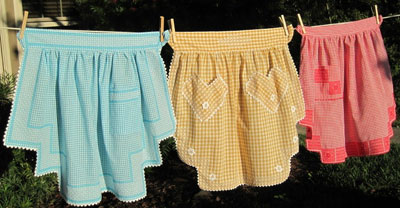 Continue reading “Summer Fun with Gingham Embroidery”
Continue reading “Summer Fun with Gingham Embroidery”
